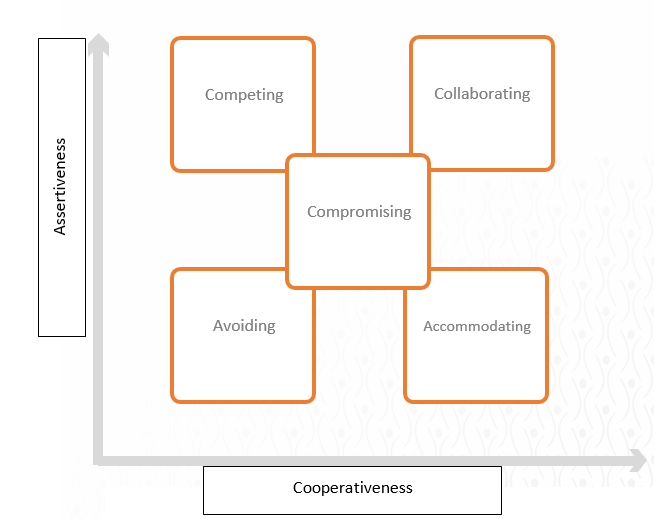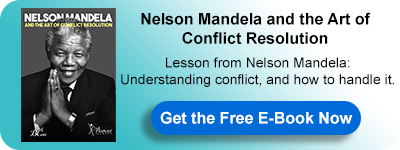Conflicts and How People React to Them
We have always looked at conflict in a certain way. Some of us see it as a negative thing that should be avoided or something that stands in the way of our progress and must be conquered to move forward and “win”. While others are frozen in the face of conflict, not sure what to do or how to deal with it.
Conflict is usually perceived as a struggle between two parties who see their goals as contradictory. Do we have to have winners and losers whenever we have a conflict? Let’s hope not. This fight really seems to be a war. But the place where you work is not a political campaign or a football field. At work, the win/lose mentality is deadly.
If you strive to see the conflict from a different dimension, it is possible to figure out a way to achieve the goals of both parties at once.
The Thomas-Kilmann Instrument is designed to measure a person’s behavior in conflictual situations. “Conflict situations” are those in which the interests of two people appear to be incompatible.
In conflict situations, we describe a person’s behavior from two dimensions:
- Assertiveness: The extent to which the person attempts to satisfy his own concerns, and
- Cooperativeness: The extent to which the person attempts to satisfy the other person’s concerns.
These two underlying dimensions of human behavior (assertiveness and cooperativeness) can then be used to define five different modes of responding to a conflict:

1. Competing (assertive and uncooperative)
One person seeks his own interests at the expense of another. This is a power-oriented mode in which you utilize whatever authority that appears to be suitable to win your own position—your capacity to debate, your position, or financial warrant. Competing signifies “supporting your privileges,” guarding a position that you believe is right, or essentially attempting to win.
2. Accommodating (unassertive and cooperative)
The absolute opposite of competing. When accommodating, the individual disregards his own interests to fulfill those of the other individual; there is a component of generosity in this mode. Accommodating may appear as unselfish generosity or noble act, complying with someone else’s preference which you do not really like, or respecting another’s perspective.
3. Avoiding (unassertive and uncooperative)
The individual neither seeks after his own interests nor those of the other person’s. Consequently, he does not deal with the issue. Avoiding might appear as a diplomatic escape from a conflict, procrastinating an issue to a more convenient time, or basically retreating from an undermining situation.
4. Collaborating (assertive and cooperative)
The absolute opposite of avoiding. Collaborating includes a trial to work with others to reach some arrangement that completely fulfills their interests. It includes analyzing an issue to identify the basic demands and needs of the two persons. Collaborating between two individuals may appear as diagnosing a conflict to gain from one another’s perceptions or attempting to locate an innovative solution to a relational issue.
5. Compromising (moderate in assertiveness and cooperativeness)
The objective is to find some catalyst, an arrangement that is mutually acceptable and in part fulfills both parties. It falls middle among competing and accommodating. Compromising is more cooperative than competing, however relatively less than accommodating. Moreover, it resolves an issue in a more straightforward way than avoiding, however does not dig as deep as collaborating. In certain situations, compromising might mean resolving the variation between the two parties, trading attributions, or looking for an agile middle-ground arrangement.
Each of us can use all five conflict-handling modes in different situations. The situation itself is what makes us adopt a style or another according to our consideration for the relationship and the stakes we are defending. You cannot identify a person’s single style of dealing with conflict. But certain people use some modes better than others and, therefore, tend to rely on such modes more heavily than others—whether because of temperament or practice.
Your conflict behavior in the workplace is therefore a result of both your personal tendencies and the requirements of the situation in which you find yourself.
For more about this topic, download our latest book ” Nelson Mandela and the Art of Conflict Resolution “ for FREE:

